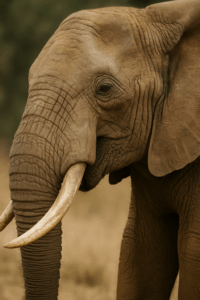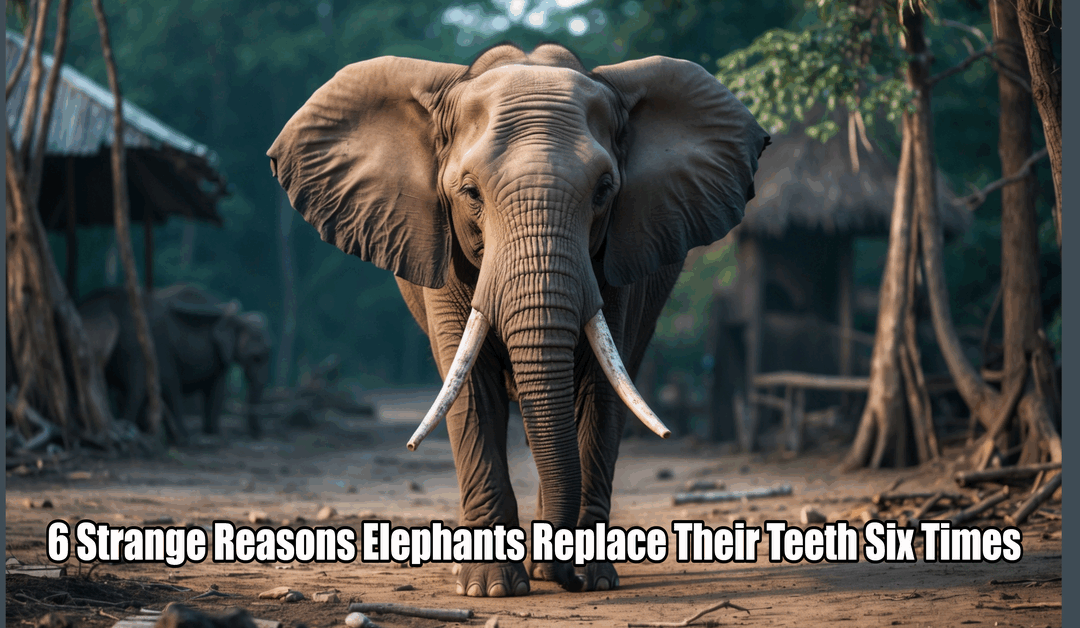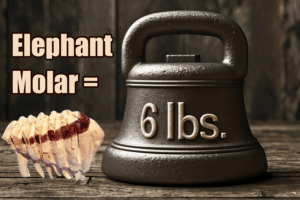Did you know elephants replace their teeth six times throughout their lives? Unlike humans, who get only two sets of teeth—primary (baby) teeth and permanent teeth—elephants undergo multiple rounds of tooth replacement. But why exactly do elephants replace their teeth six times? Let’s dive into this weird dental fact and uncover the fascinating reasons behind this unique adaptation.
Understanding Elephant Teeth Replacement
Elephants are herbivorous giants, requiring vast quantities of vegetation daily to sustain their massive bodies. To manage this constant consumption, elephants have evolved a specialized dental replacement system. Throughout their lifetime, an elephant can cycle through six sets of molars.
These sets of teeth don’t all appear simultaneously. Instead, elephants’ teeth move horizontally from the back of the mouth toward the front, similar to a conveyor belt. As older teeth wear down and eventually fall out, newer, stronger teeth push forward to replace them. This replacement happens approximately every 10 years.
6 Strange Reasons Elephants Replace Their Teeth Six Times
Elephants consume tough, fibrous plants like grasses, leaves, branches, and bark, causing significant wear and tear on their teeth. If elephants only had one or two sets of teeth, as humans do, they would quickly lose their ability to eat, drastically shortening their lifespan. Nature’s ingenious solution ensures elephants always have functional teeth suited to their diet. In fact, elephants replace their teeth six times specifically to keep up with this dietary challenge.
The Life Cycle of an Elephant’s Teeth
When a baby elephant (calf) is born, it begins with its first set of small teeth, suitable for the softer vegetation of early life. As it grows older and its diet shifts to harder and more abrasive food, the teeth progressively get larger and tougher.
By the time an elephant reaches middle age (about 30–40 years old), it is usually on its fourth or fifth set of teeth. The final, sixth set emerges in an elephant’s later years (around 50–60 years old), allowing the animal to continue feeding efficiently despite the accumulated wear of decades.
Elephant Teeth and Survival
This cyclical dental replacement is crucial for an elephant’s survival. In fact, tooth wear is a significant factor in determining an elephant’s lifespan. Once an elephant exhausts its sixth set of molars, it can no longer chew effectively. Sadly, this usually leads to starvation, as they can’t adequately process their necessary daily food intake.
Interestingly, the condition and wear pattern of elephant teeth can be used by wildlife researchers to estimate their age accurately. This helps conservationists monitor populations and implement strategies to protect these incredible creatures.
Comparing Elephant Teeth to Human Teeth
Humans only replace their teeth once because our diets don’t generally demand the constant grinding and crushing that elephants experience daily. Our teeth are relatively strong and durable enough to last most of our lives if cared for properly. However, this doesn’t mean we shouldn’t envy elephants a little for their natural dental rejuvenation! After all, elephants replace their teeth six times, while most of us have to make do with one full set.
Fun Facts About Elephant Teeth
- An elephant’s tooth can weigh up to 9 pounds!
- Elephants’ tusks are actually elongated incisors, not part of their chewing apparatus.
- The molars of an elephant can measure up to a foot long.
 Elephants grow and replace their molars throughout their lives.
Elephants grow and replace their molars throughout their lives.Conclusion
Elephants’ repeated tooth replacement is a brilliant example of how animals adapt to their environment and diet. This unique feature ensures they maintain their impressive size and strength throughout most of their long lives. From a dental perspective, elephants are true marvels of nature. The fact that elephants replace their teeth six times is more than just trivia—it’s essential to their longevity.
Explore more fascinating dental trivia and learn about other incredible adaptations animals have developed on our Weird Dental Facts page, or discover how human dental care differs significantly on our post Top 5 Bizarre Dental Myths You May Still Believe.
Sources
Frequently Asked Questions
How many times do elephants replace their teeth?
Elephants replace their teeth six times throughout their lives. This unique dental system allows them to continue eating fibrous plants into old age.
Why do elephants replace their teeth so often?
Their diet consists of tough grasses, bark, and branches, which wear down teeth quickly. Replacing their teeth six times helps elephants survive for decades in the wild.
Do all animals replace their teeth like elephants?
No, most animals—including humans—only replace their teeth once. Elephants are among the few mammals that continue dental replacement throughout most of their lives.





